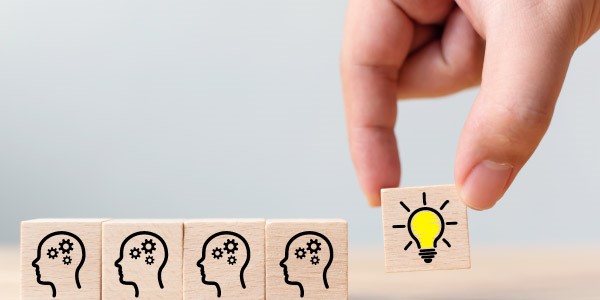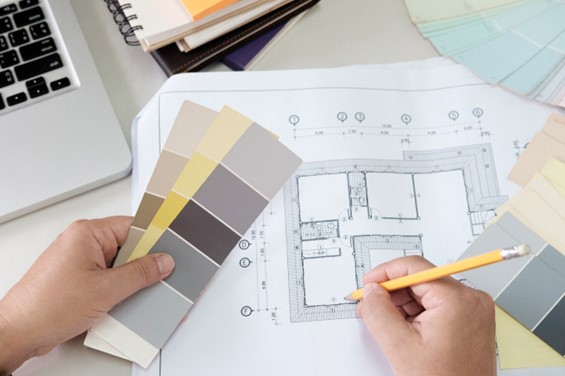How to stimulate creativity?
Creativity is the ability to generate new ideas and solutions through intellect or imagination.
Creativity immediately brings to mind great art geniuses like Picasso or Van Gogh or great inventors like Leonardo or Edison. However, there is creativity also in the worker who finds a way to simplify work, in the housekeeper who imaginatively solves an unforeseen problem or in the professional who devises a new strategy or finds a technical solution for one of his clients.
At work, at home, out of necessity or passion, all of us are often called upon to be creative to solve a problem or situation.

Tips for stimulating creativity
So many people believe that creativity is instinctive, a natural gift, you either have it or you don't. Net of genetic factors, there are good habits and a few tricks to stimulate creativity. Let's look at them together.
Broaden your mind: read, listen, watch, play, travel
Creativity is not pure invention that comes from nothing, on the contrary. Almost always a new idea comes from the connections we already possess. Here then, broadening one's mind with stimulating activities is a fundamental principle for those who wish to be creative.
- READ a magazine, a blog, a book, and if you already do, make an effort to expand your interests by trying your hand at reading some genre or topic you have never read before.
- LISTEN, the music and voices/opinions of others, open to the world to receive new insights.
- LOOK, observe what is happening around you, visually stimulate your mind, and then strive to reframe in thought what you have seen.
- PLAY, play is not just for children, both traditional games and video games ignite the mind and develop new ideas and ways of reasoning.
- TRAVEL, discover the world and other cultures, compare yourself with them, broaden your horizons.
Lateral thinking
Legend has it that Alexander the Great, engaged in the conquest of Asia, was faced with an inextricable knot in the city of Gordium. Whoever untied it would become master of the whole of Asia. Alexander tried unsuccessfully, finally took up his sword and simply cut it.
The anecdote reports an example of lateral thinking, that is, the ability to approach situations and solve problems by looking at them from different points of view than usual. Rather than direct resolution, untying the knot, Alexander used lateral thinking and solved the problem with minimal effort.
Similarly, we can stimulate the mind and solve small and large problems by looking at them from different angles. Moreover, even where traditional resolution is the most effective, we can train ourselves to look for alternative "lateral" solutions.

Techniques and tools: brainstorming, free writing, mind maps
Tricks and techniques of all kinds are most useful for those who have to be creative by trade. Here are the most popular ones:
- Brainstorming
Need an idea? Don't be afraid, start jotting down everything that comes to mind, even if it is incomplete, incorrect, out of focus. Brainstorming is, literally from English, a mental and creative storm apt to generate new ideas without a filter. The result is to put your brain back in motion and get lots of insights that will lead to a winning idea. - Free Writing
The equivalent of brainstorming for writers of all genres. Take a blank sheet of paper and start writing down whatever comes to mind. In addition to getting rid of writer's block, it can give you useful ideas for the final text. - Mind Maps
A mind map graphically represents a flow of thoughts and connections. Mind maps are primarily used to store data through the use of visual memory; not surprisingly, they are used extensively by students and teachers. However, fixing mental concepts graphically also helps creativity: once represented, existing connections appear to us with greater clarity and we can then work to make new connections and associations.
Sleep well
As a study conducted by McKinsey, one of the world's largest consulting firms shows that sleep affects our ability to solve problems:
- when confronted with the same problem, a first group of individuals with an adequate number of hours of sleep were able to come up with a higher and better performing number of solutions than a second group with few hours of sleep;
- sleeping well impacts the processes of learning and information processing. Those who sleep well retain more new information and develop new connections between it than those who sleep poorly.
The test results highlight, therefore, that sleep is an engine for our creativity and our ability to solve problems effectively. As folk tradition teaches, sleeping on it is really good for you!

X-BIO: restorative sleep for your creativity
Anyone who engages in an activity that requires creativity, problem solving, or ingenuity work knows how important it is for the mind to be fresh and at its best. Dedicating oneself to a creative activity on a "bad day," perhaps after sleeping badly, is a feat!
Sleep is a vital functional, a time of "recharging" that the body needs. Restorative sleep:
- It drives muscle and tissue reconstruction processes;
- allows brain activity to regain vigor and assimilate/consolidate new information.
The X-BIO line is designed for those who need to ensure, in work and life, high physical and mental performance. Its patented system ensures quick and effective energy recovery, all to the benefit of our mental and physical well-being. Those who use X-BIO can be seen!
X-BIO is an ideal solution for all those who always need to be creative, imaginative, full of ingenuity. High rest performance for those who need high performance.
Models from the X-BIO line are available at our Shop. Choose the mattress that best suits your needs and feel the difference!
